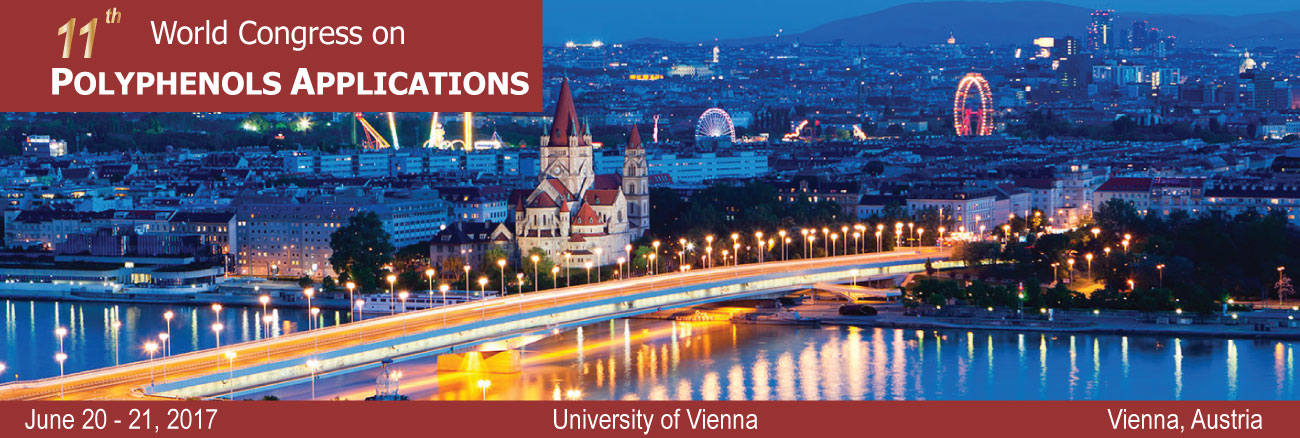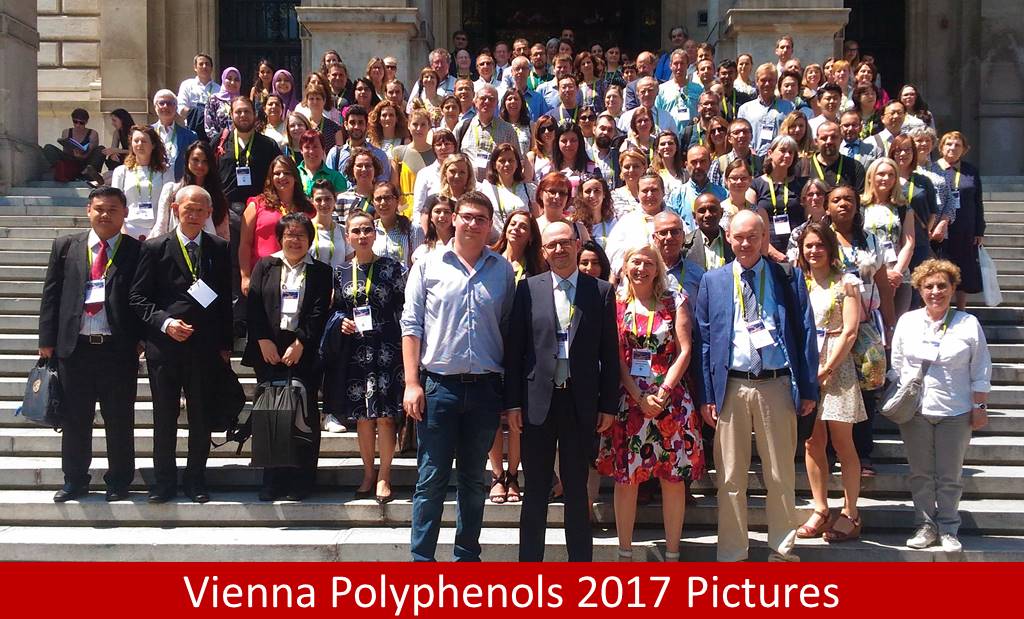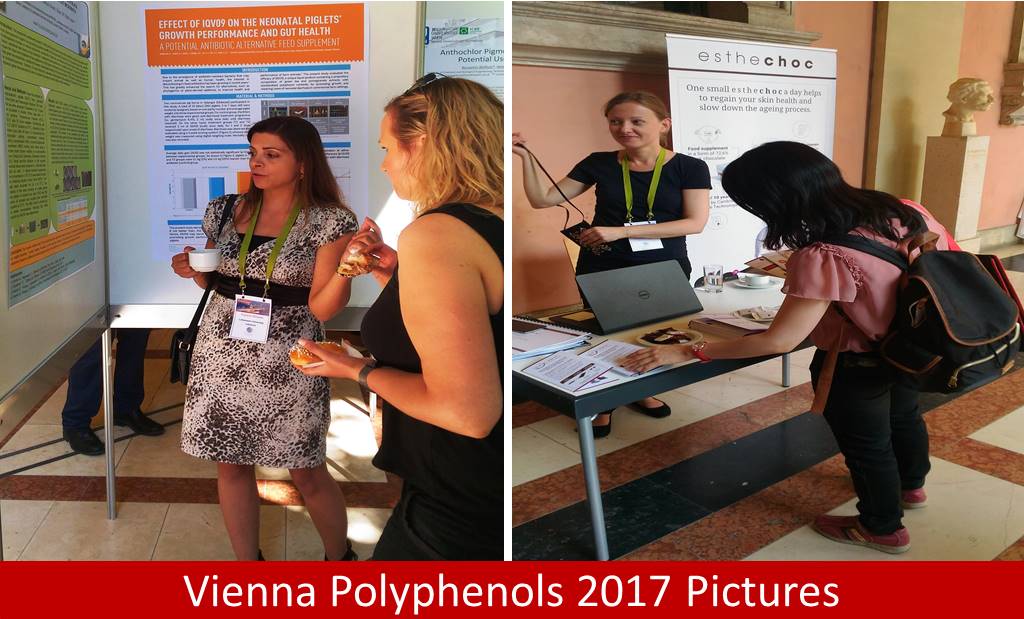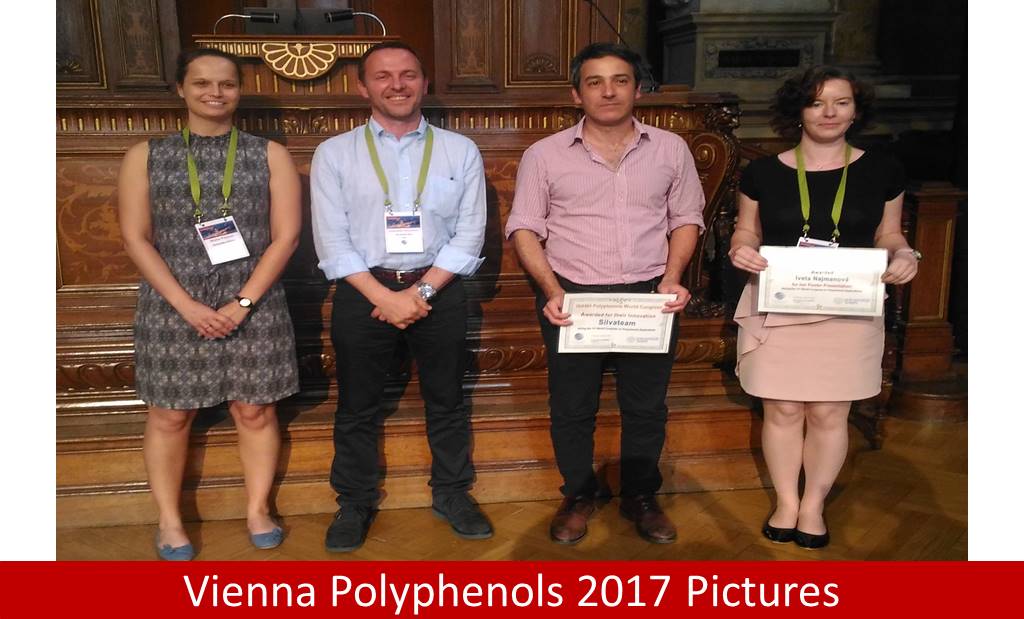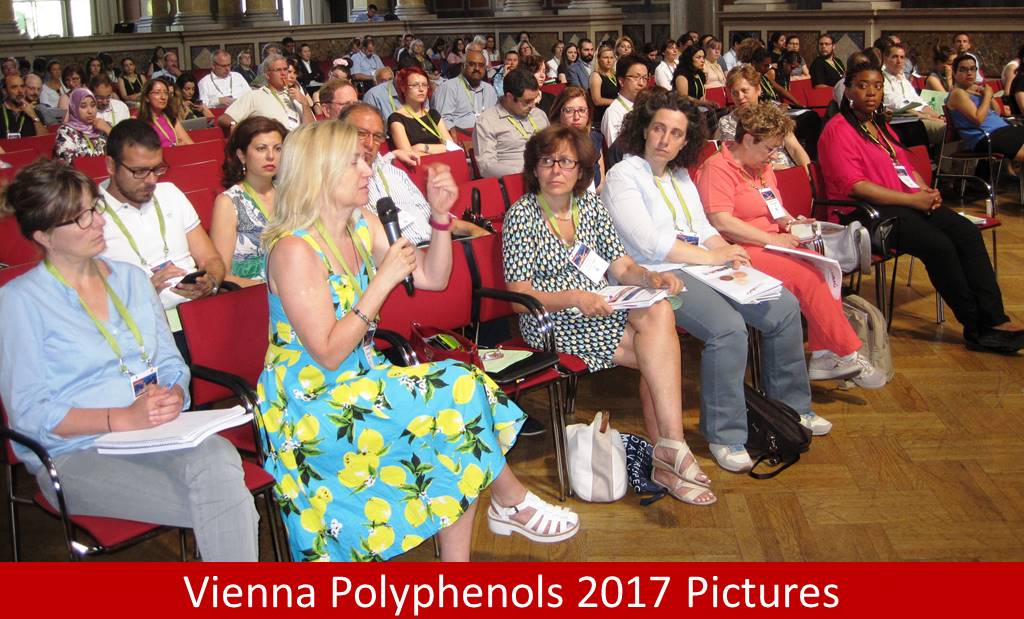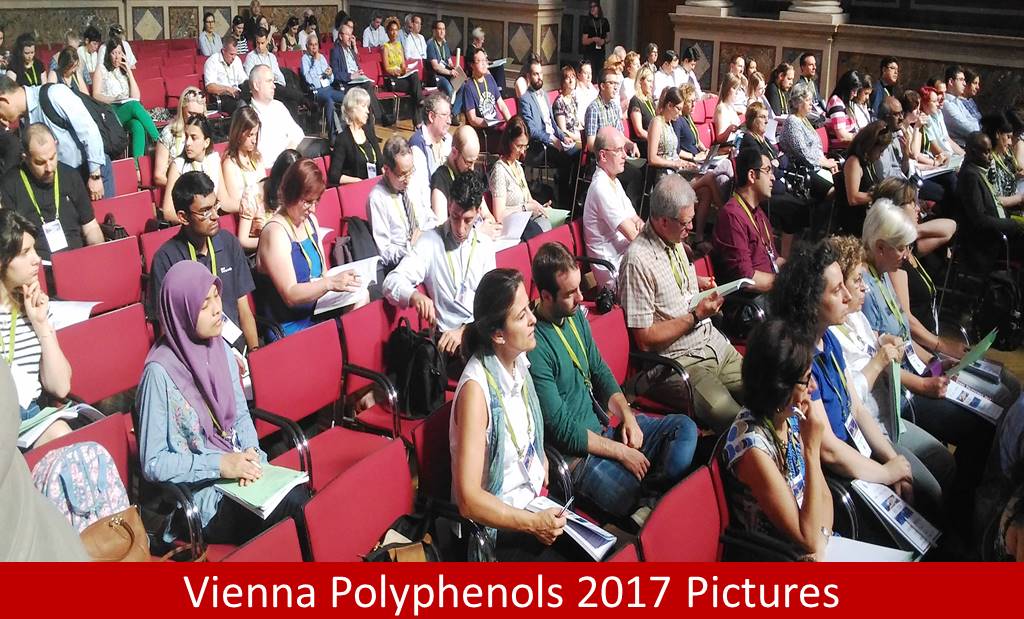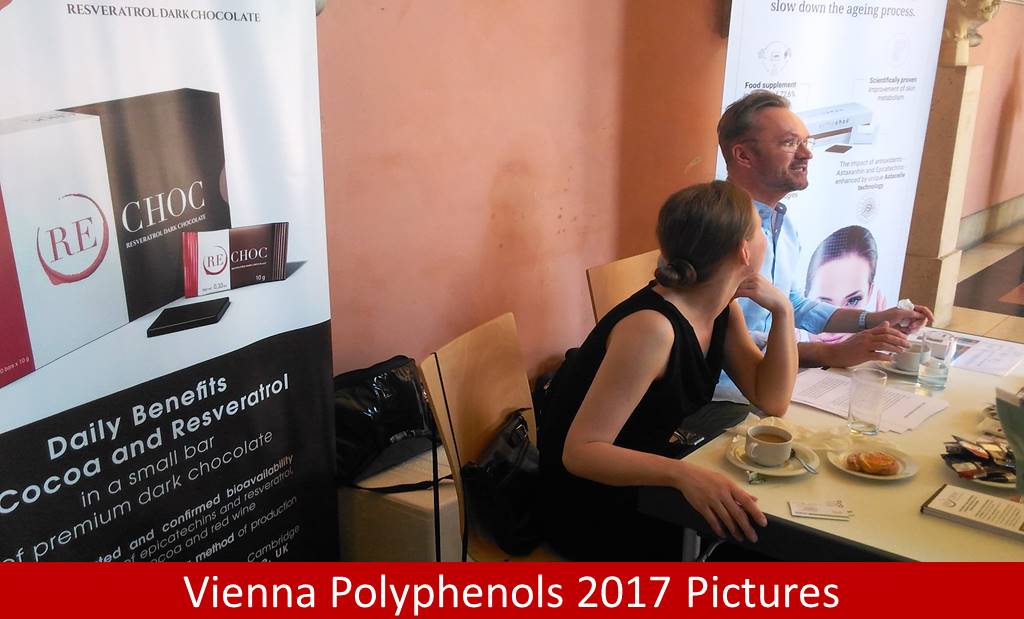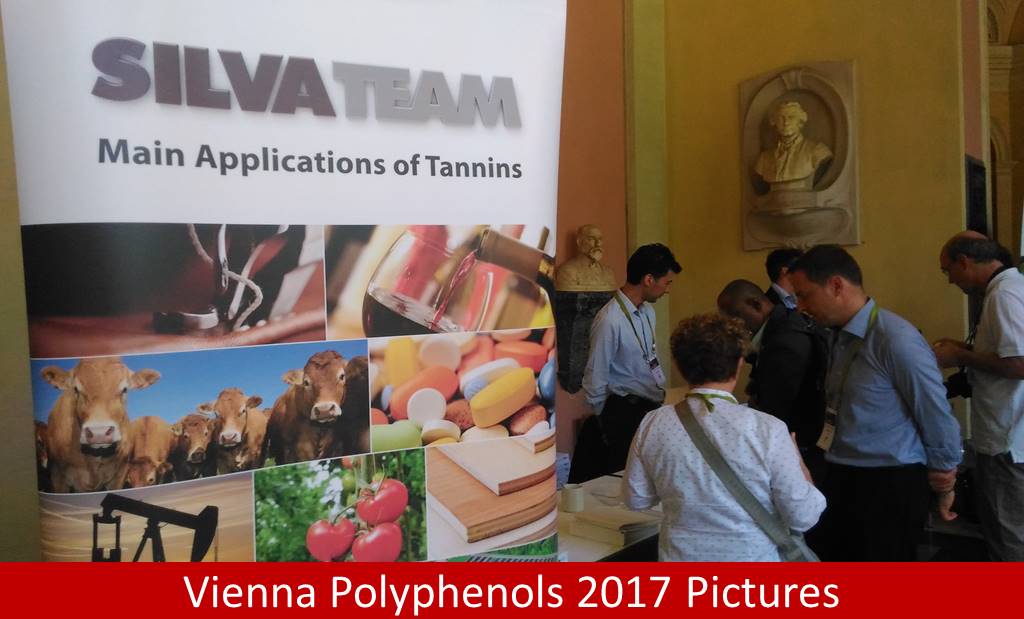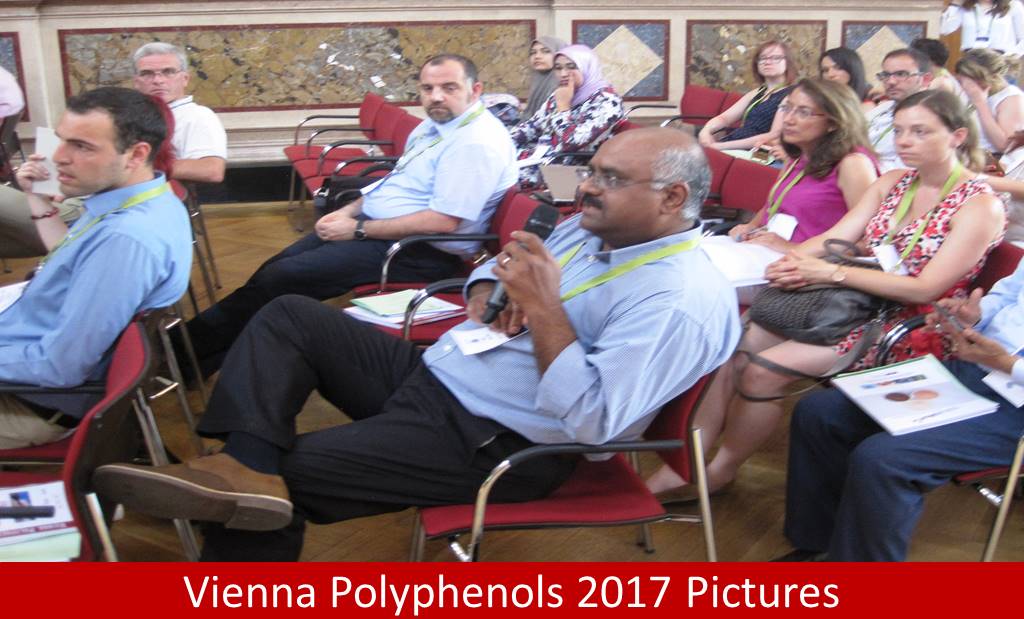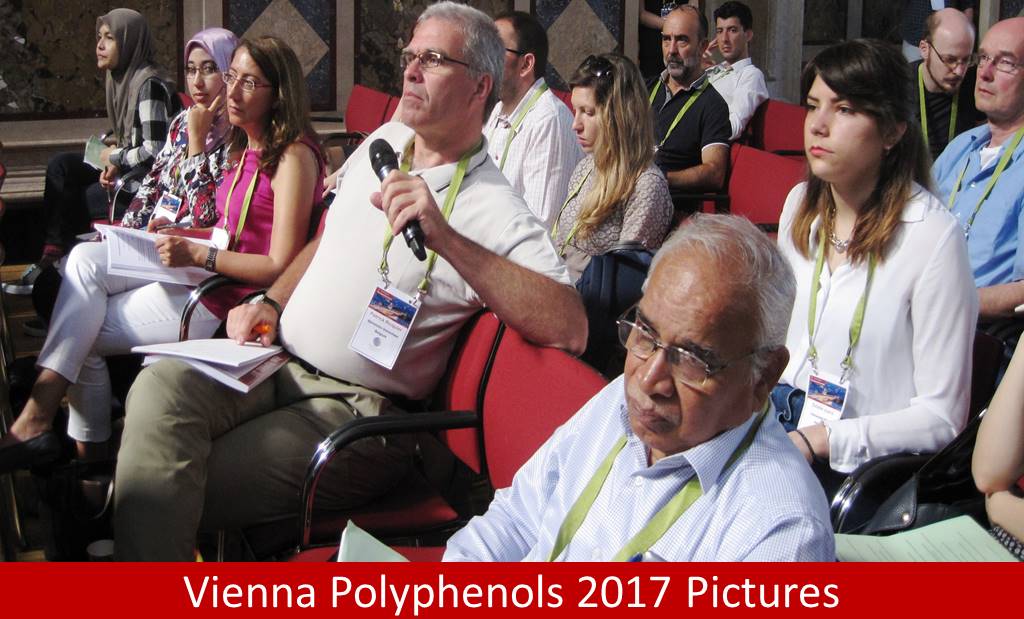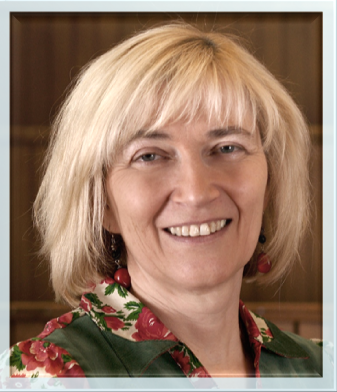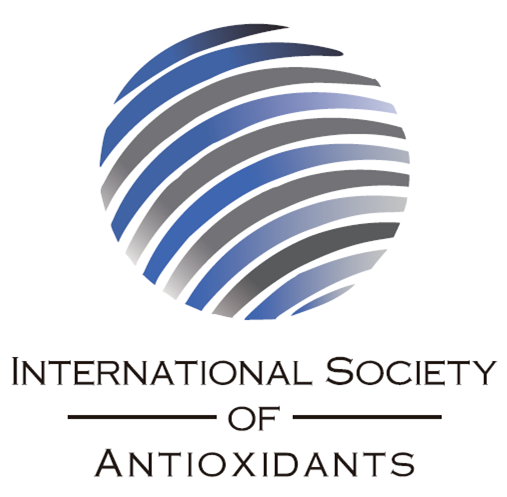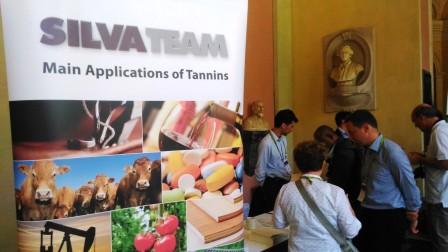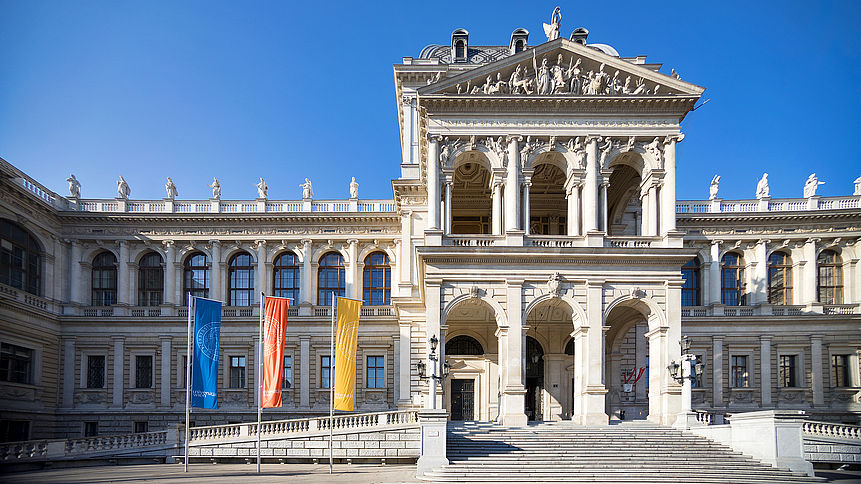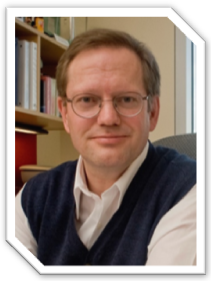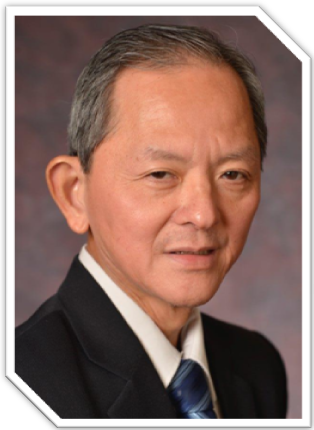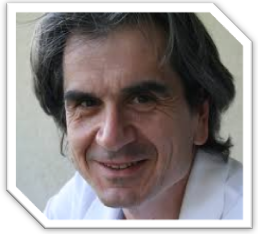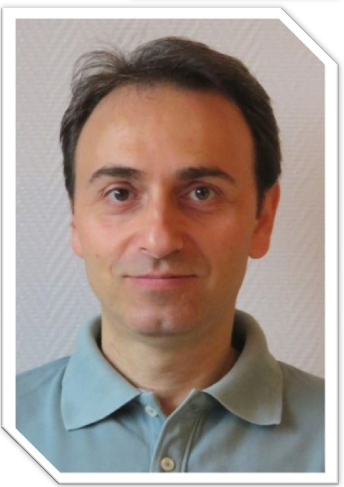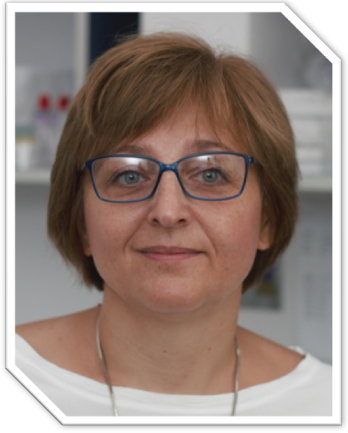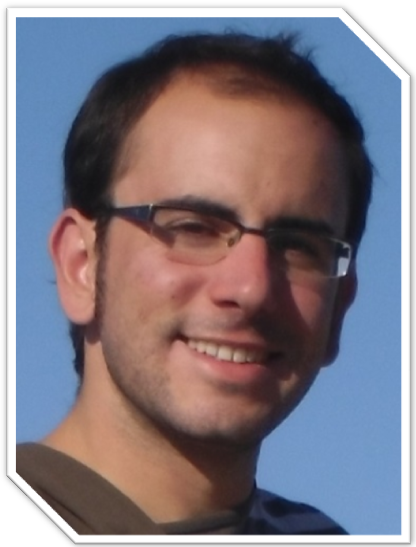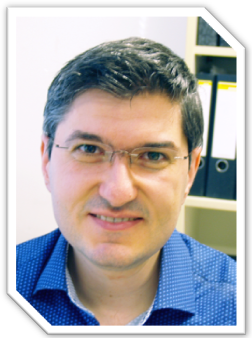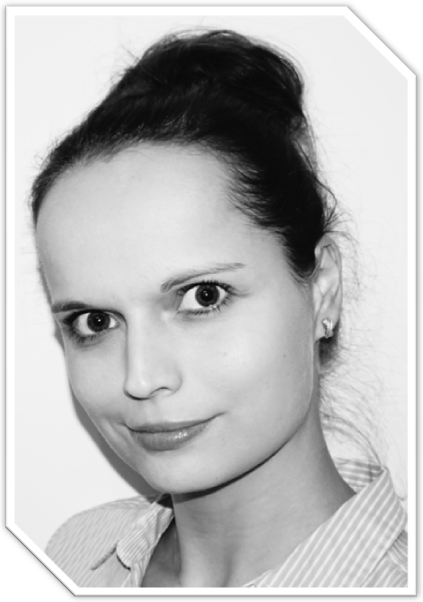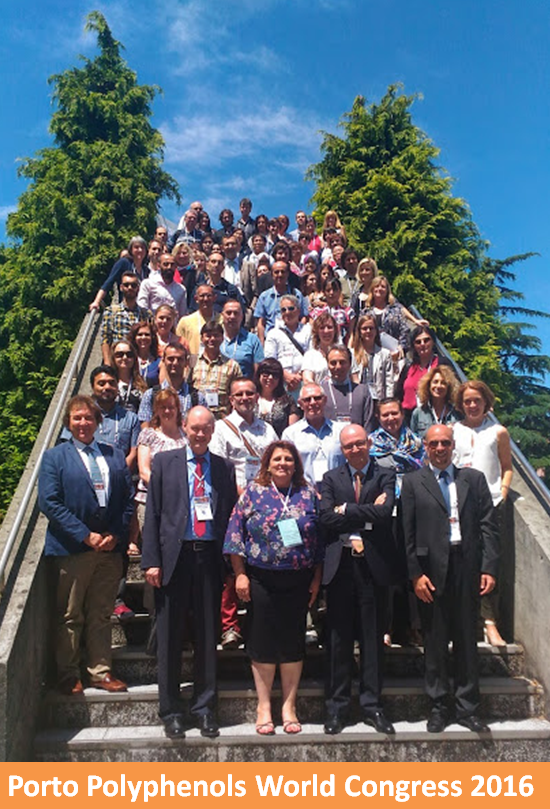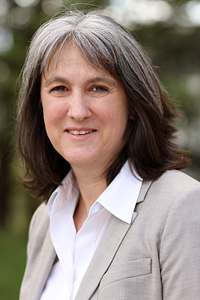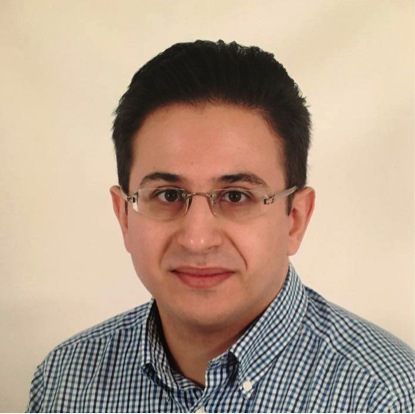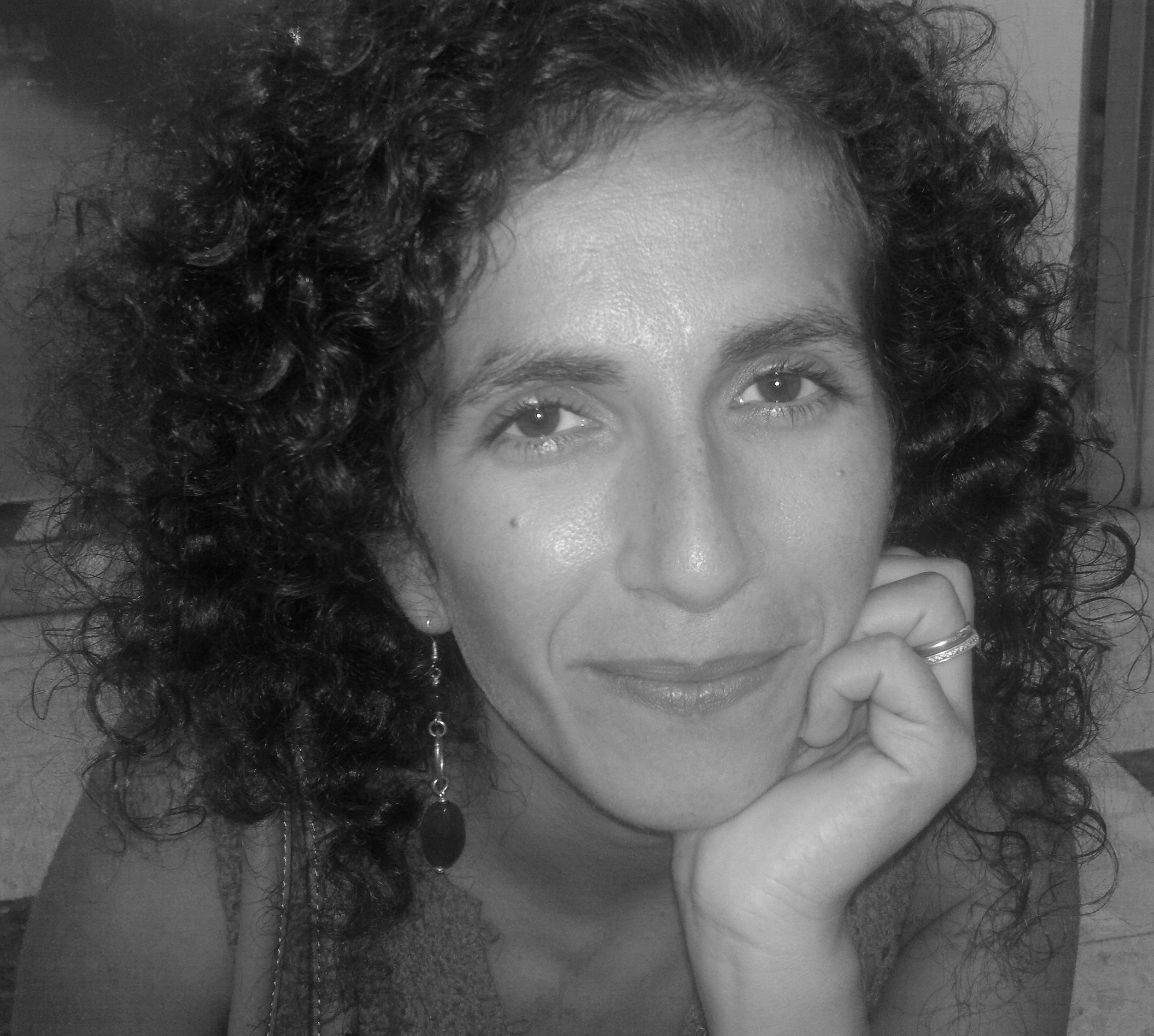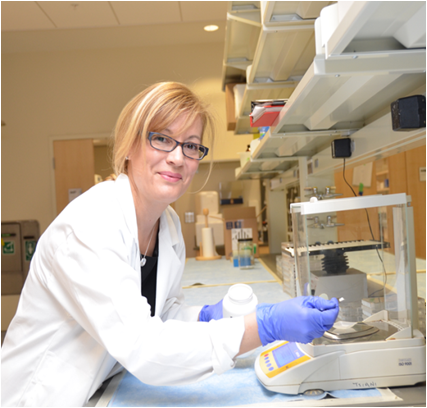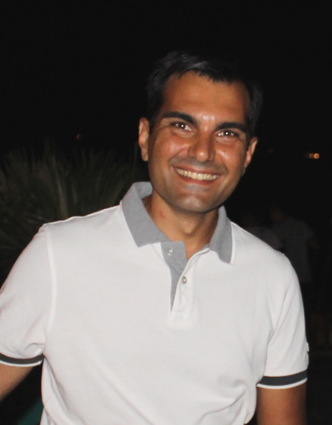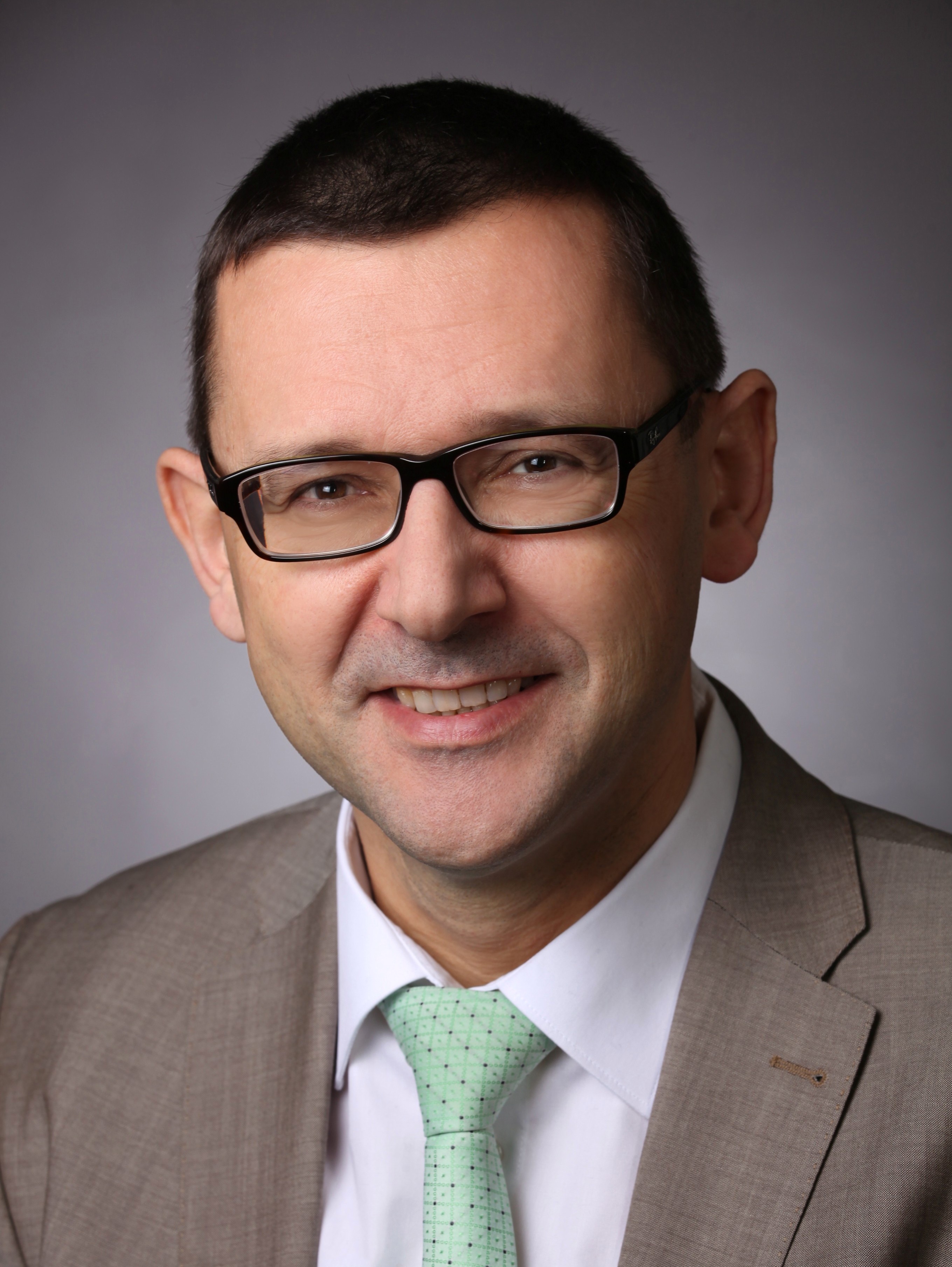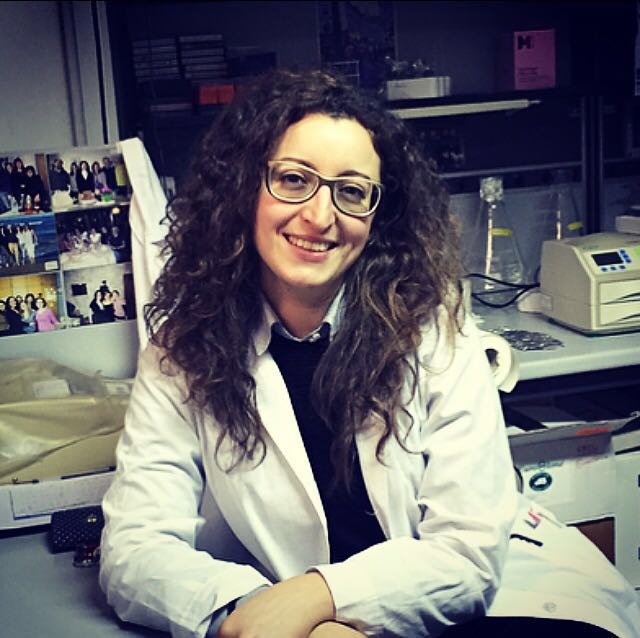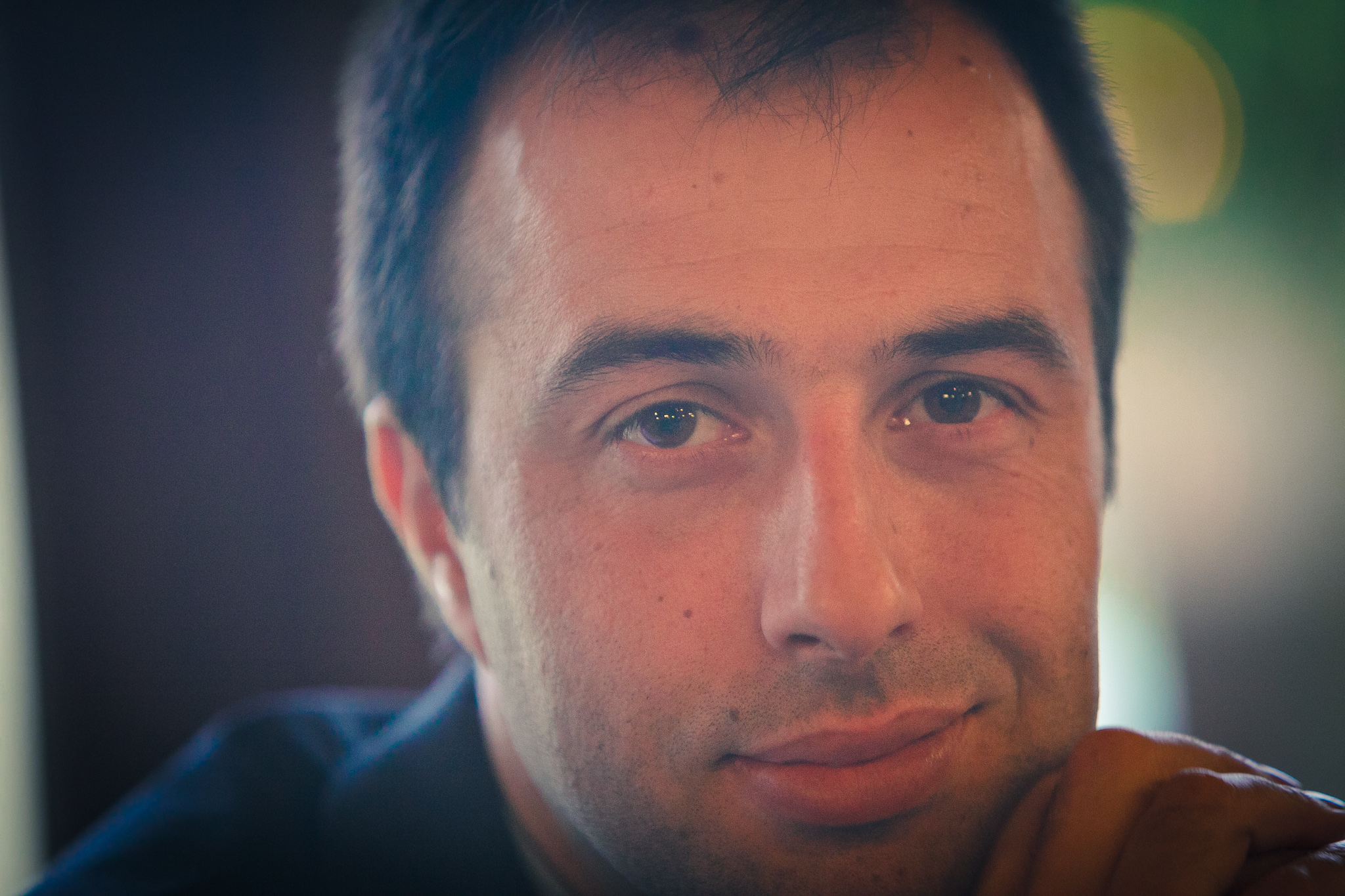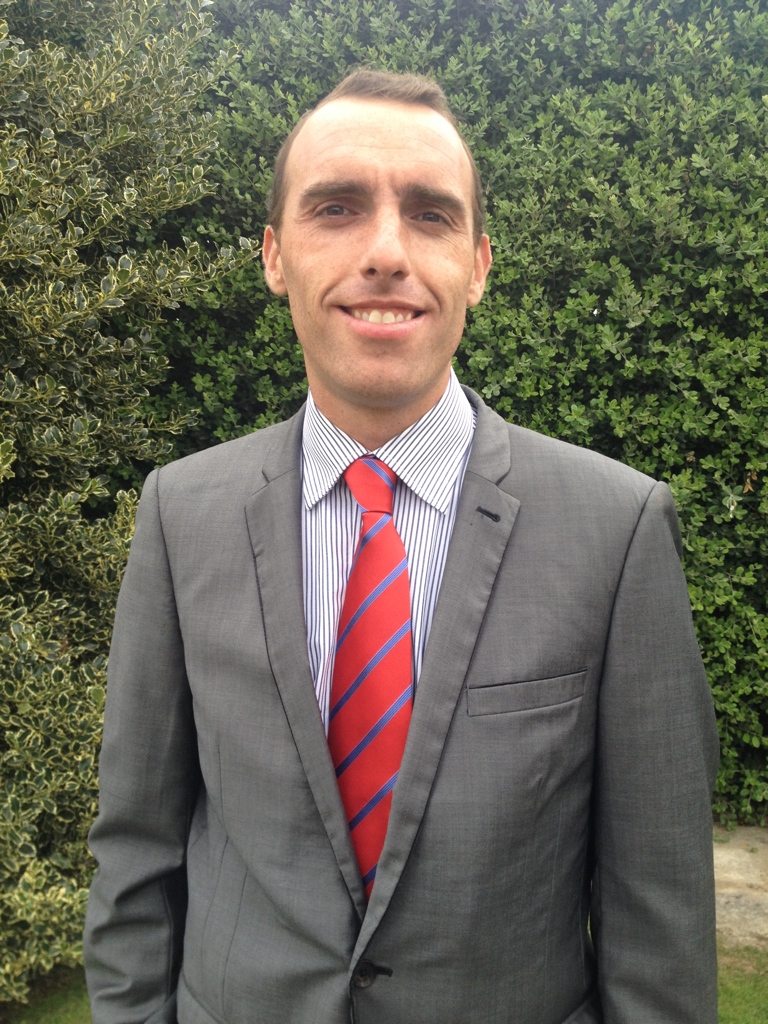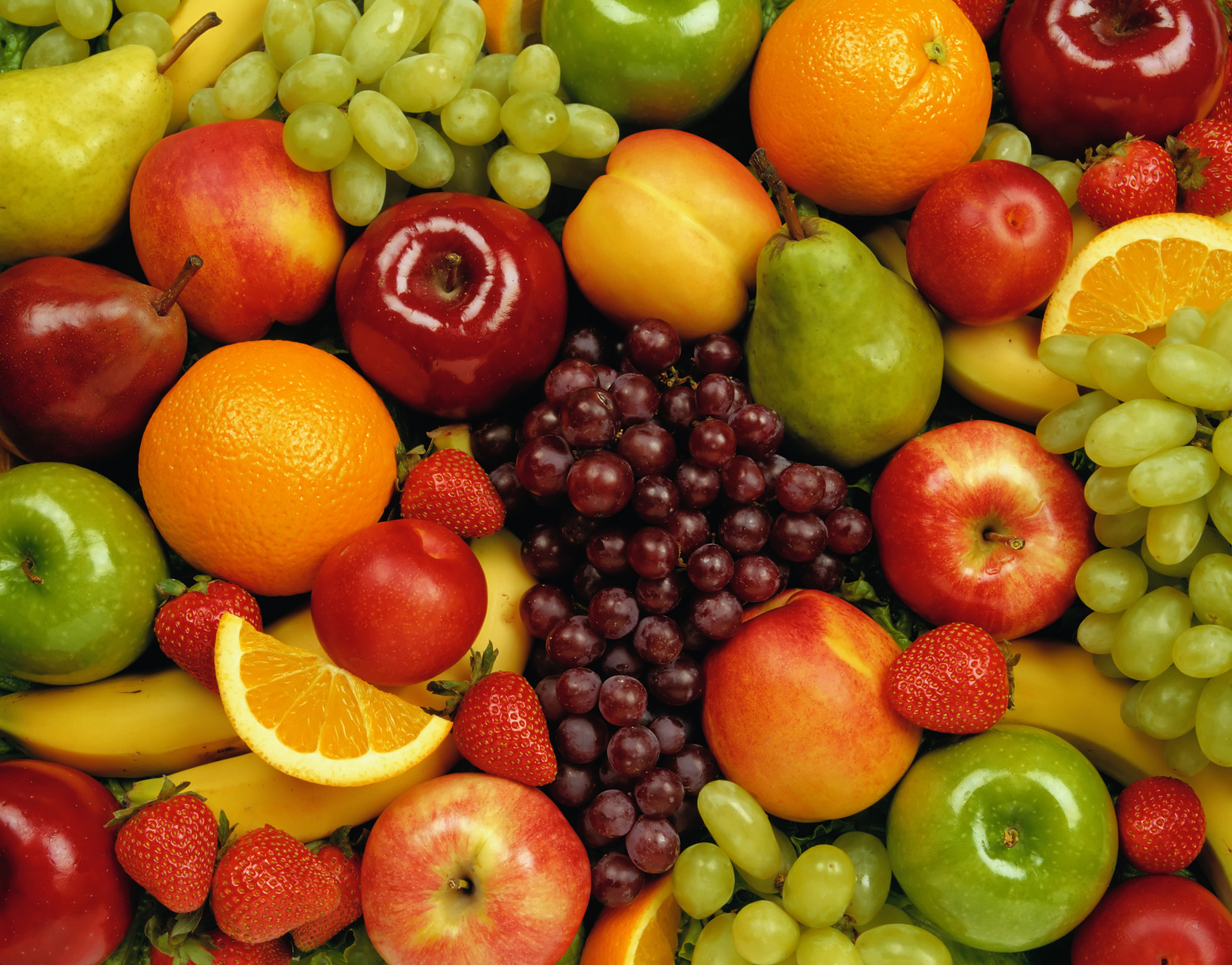Polyphenols and Gut Microbiota: Concluding Remarks by Fred Stevens and Marvin Edeas
The topic of the first morning session on June 20, chaired by Drs. Marvin Edeas and Fred Stevens, was ‘polyphenols and gut microbiota’.
Dr. Marvin Edeas (Université Paris Descartes, Paris, France) provided a broad overview of what is known about the interactions between polyphenols and gut microbiota. He also posed challenging questions for future research in the field. He argued that dysbiosis of the gut microbiome not only affects inflammation of the gut but also pathogenesis of liver, bone, lung, skin and neurodegenerative diseases. Polyphenols may ameliorate dysfunctional host metabolism by correcting dysbiosis of the gut or through gut microbiota-derived polyphenol metabolites, Edeas proposed. From this perspective, improving polyphenol bioavailability may not necessarily lead to optimal host health, a point that was heavily discussed in the Question & Answer period.
Dr. Fred Stevens (Linus Pauling Institute, Oregon State University, U.S.A.) followed by providing an overview of the chemistry of gut microbial metabolism of polyphenols. His survey of metabolic conversions demonstrated that few reactions carried out by gut microbiota, primarily reductive, give rise to an enormous array of polyphenol metabolites, many of which have bioactivities that differ from those of the parent polyphenols in terms of type and potency.
Dr. David Berry (University of Vienna, Austria) presented the findings of his research on the impact of long-term consumption of anthocyanin-rich fruit juice on the composition and functional capacity of the gut microbiota. His novel approaches, based on single-cell isotope labeling, will be very useful to understand (the effects of polyphenols on) metabolic activity, substrate partitioning, and niche competition among individual intestinal microbes.
Dr. Anna Bielak (Polish Academy of Sciences, Warsaw) discussed the possible anti-aging effects of resveratrol, quercetin, and curcumin through activation of sirtuins, a group of deacetylases and mono-ADP ribosyltransferases whose stimulation can extend lifespan in model organisms. The anti-aging effects of polyphenols in humans are, as Dr. Bielak pointed out, controversial due to conflicting reports in the literature.
The next speaker, Dr. Mariano Fernandez Miyakawa (CONICET, Argentina) presented his research on the potential of quebracho and chestnut tannins as alternatives to antibiotics in the poultry industry. He concluded that tannins and antibiotics have different effects on the cecal microbiota composition and that further research will tell whether use of quebracho or chestnut-derived feed additives are beneficial for poultry health. At the end of the congress, Dr Fernandez Miyakawa was awarded for this innovative presentation. More information about the award by clicking here.
Dr. Essi Päivärinta (University of Helsinki, Finland) presented research that demonstrated that cloudberry feeding in multiple intestinal neoplasia/+ mice, a model of intestinal cancer, resulted in changes in gut microbiota composition and attenuation of intestinal inflammation as well as downregulation of glycolytic activity in the intestinal mucosa which may account for the smaller adenoma size in these mice compared to the mice that were fed the control diet.
Dr. Jaroslav Havlik (University of Glasgow, UK) presented the interesting finding that co-incubation of dietary fiber with selected polyphenols in human fecal slurries, under anaerobic fermentation conditions, resulted in decreased metabolism of rutin and catechin. Although the researchers observed a large degree of inter-individual variation, the results show that fiber consumption may influence polyphenol bioavailability.
The second morning session was focused on polyphenol analysis and on the mechanistic effects of polyphenols in humans. Despite a severe cold, Dr. Tony Kong (Rutgers University, U.S.A.) was able to present his long-standing research on dietary polyphenols as inducers of Nrf2, a master regulator of the antioxidant defense system that stimulates the expression of an array of enzymes involved in reducing oxidative stress and in the detoxification of carcinogens. More recently, Dr. Kong’s group and others have reported that phytochemicals have the ability to attenuate hypermethylation of Nrf2’s CpG promoters, leading to inhibition of carcinogenesis. Failure of some polyphenols to activate the Nrf2 system has been linked to their lack of in vivo efficacy and to failed clinical trials.
Dr. Pedro Mena (University of Parma, Italy) argued that in vitro studies with polyphenols should be performed under experimental conditions that simulate physiological conditions. To maximize the translatability of in vitro findings to effects in animals and humans, one should take into account physiologically relevant concentrations as well as gut microbial and hepatic metabolites of polyphenols in cell culture studies.
The last speaker in the session, Dr. Ebru Cenk (University of Vienna, Austria), reported that the predominant anthocyanins in blackberry juice exerted anti-inflammatory effects by inhibiting the NFκB-mediated release of pro-inflammatory cytokines from lipopolysaccharide-stimulated THP-1 monocytes, but not their gut microbial metabolites, protocatechuic acid and phloroglucinol aldehyde. These findings illustrate once more that gut microbial metabolism of polyphenols could modulate polyphenol bioactivity in the (mammalian) host.
If you would like to know more about these presentations, you can order the abstracts book, by following this link.
